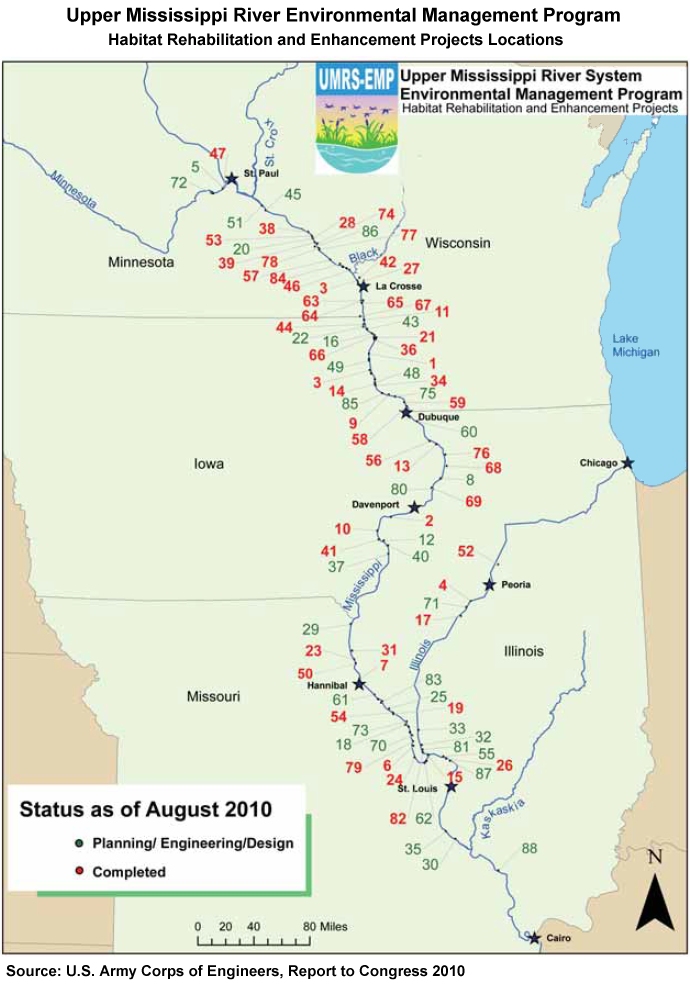In 1986, the Corps of Engineers received a new mission within the Mississippi River basin: ecosystem restoration. The 1986 Water Resources Development Act (WRDA) created the Upper Mississippi River Environmental Management Program. Recently, its name has been changed to the Upper Mississippi River Restoration program. The program is dedicated to developing restoration projects within the Upper Mississippi River:
“To ensure the coordinated development and enhancement of the Upper Mississippi River system, it is hereby declared to be the intent of Congress to recognize that system as a nationally significant ecosystem and a nationally significant commercial navigation system. Congress further recognizes that the system provides a diversity of opportunities and experiences. The system shall be administered and regulated in recognition of its several purposes.”
EMP contains two subprograms:
- Habitat Rehabilitation and Enhancement Projects (HREP) – development, design, and construction of restoration projects
- Long Term Resource Monitoring Program (LTRMP) – data gathering and monitoring of constructed projects and the river environment

It is important to note that EMP was part of a Congressional compromise to a lawsuit filed in the early 1970s by conservation and environmental nonprofits and railroad companies to stop the construction of the Melvin Price locks & dam. The existing Alton Dam was failing and the Corps of Engineers attempted to push through a proposed new replacement dam with two 1,200-foot locks to replace the existing single 600-foot lock. Ultimately, one 1,200-foot and one 600-foot lock were constructed. The 1986 WRDA also “provide(d) general authority to determine the need for environmental improvements on the Upper Mississippi River System”, in other words a comprehensive master plan for the river.
For most of the last two decades the Corps of Engineers has pushed again for more new locks on the UMR through their Navigation and Ecosystem Sustainability Program (NESP). For detailed information on this program refer to the Nicollet Island Coalition Report: Big Price – Little Benefit
